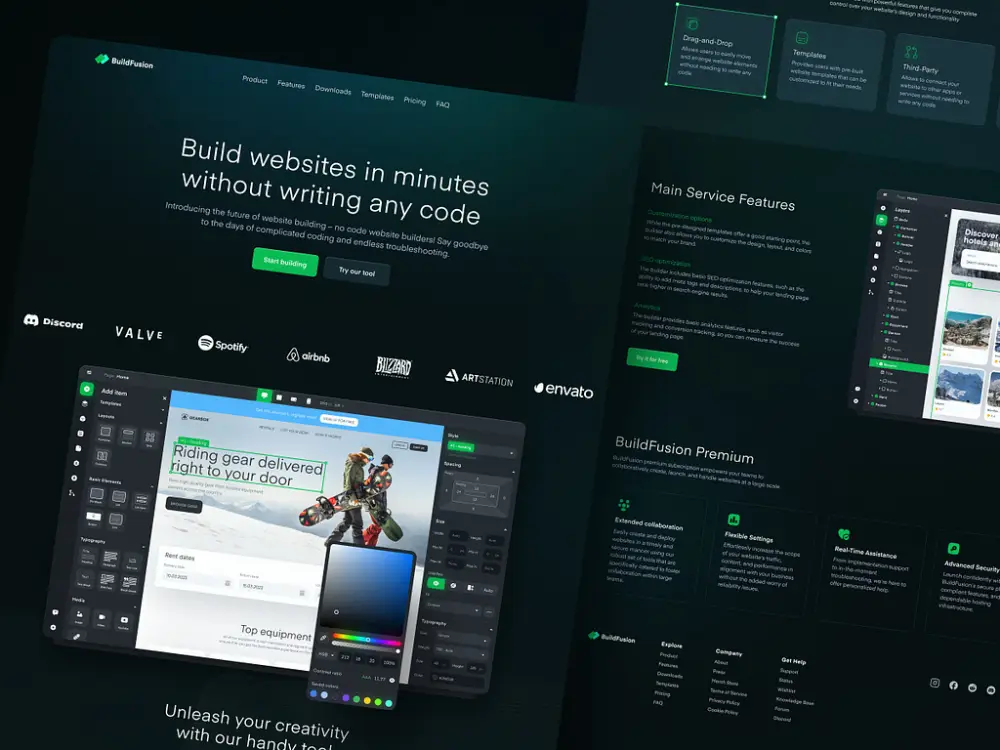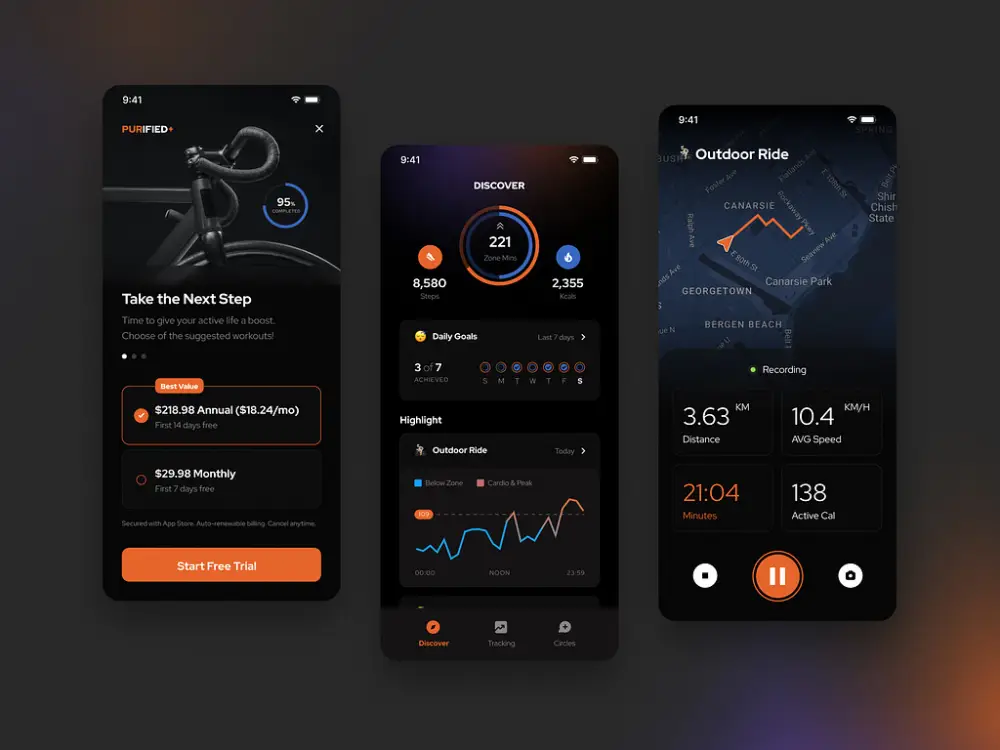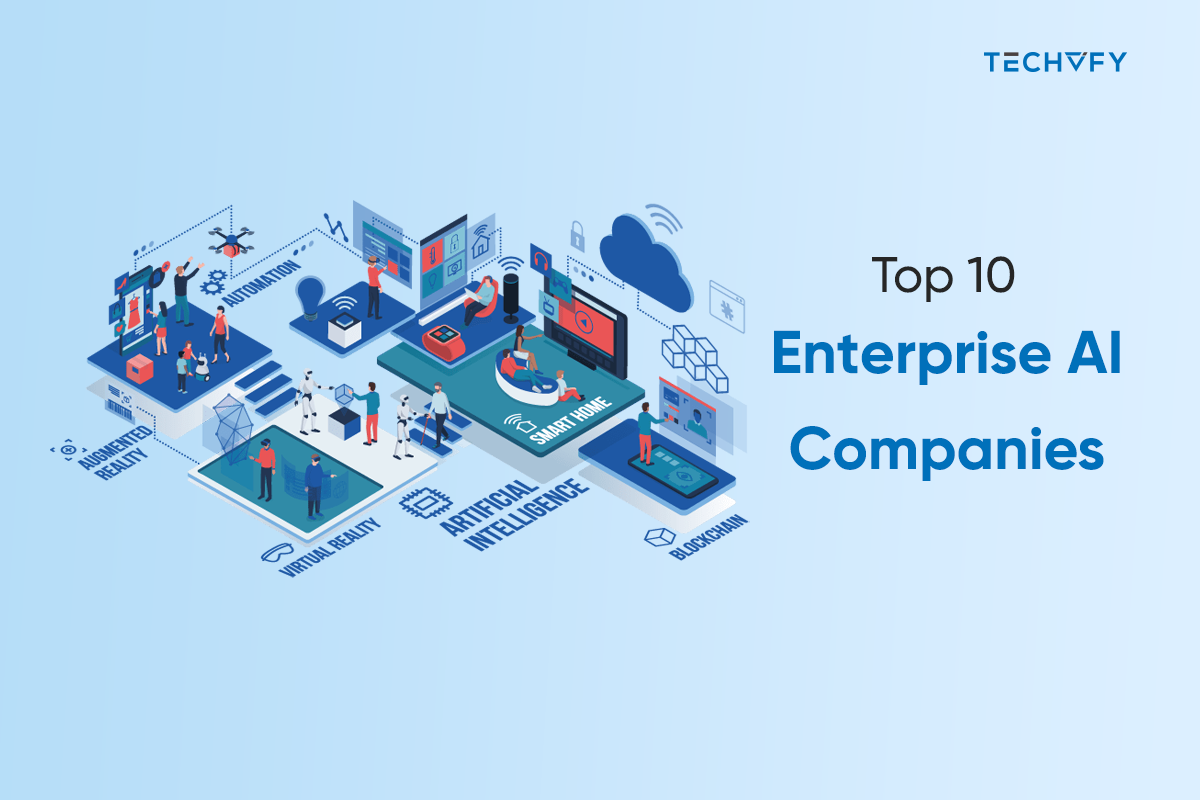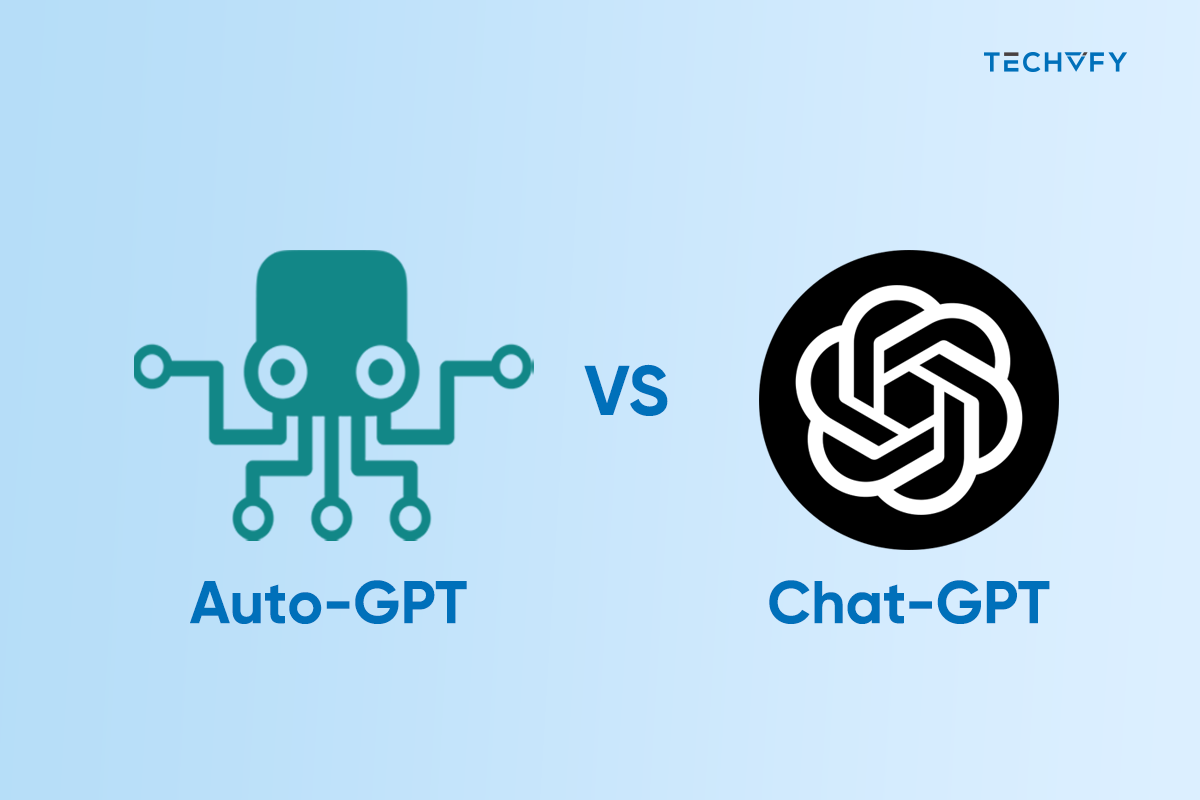15 Software Development Trends in 2025 You Need to Know
- Harry Nguyen
- 0 Comments
As the landscape of software development continues to evolve, particularly in light of recent global events, what’s considered standard practice today might soon become outdated. For entrepreneurs at the helm of startups, staying abreast of the direction in which software trends are heading is crucial when it comes to app development. Notably, the rise of low-code platforms is transforming app creation, with projections indicating a market growth to approximately $46.4 billion by 2026.
And if keeping pace with software trends hasn’t been a focal point for you thus far, maybe it’s time to shift gears. The economic fluctuations of 2023 have underscored the necessity for businesses to make smart choices and embrace technologies that cover both cost efficiency and flexibility.
Curious about the leading Software Development Trends for 2025? TECHVIFY is here to shed light on the subject. Continue reading to discover the most recent tech trends and understand how they can enhance your product development strategy.
1. Artificial intelligence (AI) and Machine learning (ML)
The continual advancements in artificial intelligence (AI) and machine learning (ML) have made them key players in the current software development arena. The 2022 McKinsey report highlights that half of the organizations globally have already implemented AI in some capacity. The uses range from enhancing service operations and product features to automating contact center tasks.
Looking ahead, the AI market is poised for robust growth, with projections suggesting it could surpass $500 billion by 2024. Approximately 35% of businesses around the globe have integrated AI into their operations. Interestingly, there’s a growing curiosity among 42% of companies, which are actively exploring the potential benefits of AI for their business needs.
Moreover, an estimated 50% are considering the adoption of AI within the forthcoming year. This suggests that a substantial 77% of companies are either already leveraging AI or are contemplating its incorporation into their business strategies.
The rationale behind the widespread adoption of AI and ML technologies is clear. Here are the primary advantages they bring to software development:
- Automation of monotonous tasks to cut down on manual labor and boost efficiency.
- Employment of ML algorithms to detect and fix bugs, fortify against vulnerabilities, and enhance code quality, which not only delivers more dependable software but also compresses the duration of the software development life cycle (SDLC).
- Utilization of AI for in-depth data analysis, facilitating the refinement of development practices and enabling informed decision-making.
- Creation of customized user experiences and recommendations to elevate user satisfaction.
- Prediction and prevention of system failures through ML algorithms, contributing to smoother software operations.
- Application of ML models to ensure software can evolve and adapt to user needs over time.
To harness AI and ML for these purposes, businesses need software developers who are well-versed in specific areas, including model training, integration, management, data handling, and programming languages such as C++, Java, and Python.
Have a Project Idea in Mind?
Get in touch with experts for a free consultation. We’ll help you decide on next steps, explain how the development process is organized, and provide you with a free project estimate.
2. Internet of Behavior (IoB)
Although some trends in the software industry have been established for some time, the Internet of Behavior (IoB) is a newer entrant that is swiftly gaining ground. It’s anticipated that by 2032, the IoB market could burgeon to a staggering $3,592.6 billion.
And by the year 2028, according to Gartner, workforce shortages are expected to catalyze a pivotal shift, with intelligent robots poised to outpace human frontline workers in key industries like manufacturing, retail, and logistics. This transformation necessitates a strategic overhaul for businesses, prompting them to adapt their operations to harness the benefits of robotic automation for enhanced efficiency and productivity.
The IoB is essentially an evolution of the Internet of Things (IoT). It integrates technologies such as sensors, mobile applications, wearables, along with AI and ML algorithms, to gather behavior-related data. This data is then leveraged to tailor user experiences more personally.
The advantages of IoB extend beyond personalization, particularly in the realm of software development, including:
- Enhanced decision-making powered by data;
- Insights from behavioral analytics;
- Predictive capabilities for user preferences and trends;
- Streamlined process optimization.
Prominent companies are already utilizing the Internet of Behavior to deliver tailored experiences. Facebook, for example, employs IoB to curate and present ads that resonate more effectively with its users. Similarly, Spotify uses machine learning algorithms within its Discover Weekly feature to offer personalized music recommendations.
3. Internet of Things (IoT)
Software engineering trends may fluctuate, yet the Internet of Things (IoT) steadfastly maintains its relevance and growth. Projections by Statista indicate that by 2030, the world will see IoT devices soar to over 29 billion, marking a nearly threefold increase from the 9.7 billion devices recorded in 2020.
IoT represents an interconnected web of physical objects — ranging from smart home appliances and wearable gadgets to vehicles — each embedded with sensors and capable of swapping data over the Internet.
IoT technology brings a host of benefits, including:
- Seamless connectivity and instant data sharing.
- Insights derived from data for smarter decisions.
- Enhanced automation that boosts efficiency.
- The capability for remote device management.
- Synergy with AI and analytics to create more intelligent systems.
Wearable devices like the Apple Watch, Jawbone, and Misfit are prime examples of IoT applications. These devices monitor your daily activities, heart rate, and personalize training regimes, besides providing health and fitness recommendations tailored to your needs.
4. Automation
The hyper-automation market is set to break records this year, with expectations to surpass $155 billion — an impressive figure by any standard.
In today’s world, there’s a strong push towards automating work processes across all domains, including software development. Although it’s not feasible to automate every aspect of the software development life cycle (SDLC), strategic use of cutting-edge technologies can streamline and simplify several stages. For instance, in the realm of testing, 77% of companies have adopted automated testing among other methodologies.
The benefits of introducing automation into software development workflows are multi-faceted:
- Elevates team efficiency and output.
- Guarantees consistent, error-free procedures.
- Yields savings in time and expenses.
- Enhances system adaptability and growth capacity.
- Strengthens team cooperation and synergy.
In essence, automation relieves the software development team from the burden of repetitive and less critical tasks. This reallocation of effort allows them to devote more time and resources to the more complex and impactful elements of the development process.
5. Blockchain technology
Blockchain technology has indeed become a cornerstone in discussions regarding software engineering advancements. As a peer-to-peer (P2P) network, blockchain’s pivotal role in transforming transaction processes is underscored by its robust security, transparency, and decentralization. Reflecting its impact, Statista projects that global expenditure on blockchain solutions have hit around $19 billion in 2025.
When it comes to embedding blockchain into software development ventures, the advantages are clear and compelling:
- Decentralization and Transparency: Blockchain operates on a distributed ledger system, eliminating the need for a central authority, and ensuring that all transactions are transparent and verifiable by all participants.
- Immutable and Secure Data Storage: Once recorded, the data on a blockchain cannot be altered, which drastically reduces the risk of fraud and unauthorized tampering.
- Efficient Smart Contract Execution: Smart contracts are self-executing contracts with the terms directly written into code, which can automate complex processes and transactions without the need for intermediaries.
- Improved Data Sharing and Collaboration: Blockchain’s structure allows for secure and direct data sharing, fostering improved collaboration between parties.
- Enhanced Trust and Authentication: With its inherent security features, blockchain provides a higher level of trust and authentication for users and transactions.
6. Big Data Security & Cybersecurity
The persistent issue of data breaches, with the average cost soaring to $9.44 million per incident in the US as of 2022 according to Statista, underscores the critical need for robust big data security measures. It’s evident that securing big data will continue to be a major focus in the software industry, especially since data is now the lifeblood of businesses and is predominantly cloud-stored. The protection of this data is paramount.
The implementation of big data security within software development brings numerous benefits:
- Data Protection: Shields sensitive data from unauthorized access and potential breaches.
- Regulatory Compliance: Ensures adherence to stringent data protection laws like the Health Insurance Portability and Accountability Act (HIPAA).
- Threat Management: Enables the early detection and prevention of potential security threats.
- Data Governance: Strengthens the management and oversight of data access and usage.
- Business Continuity: Mitigates risks to maintain operational integrity in the face of security challenges.
- Trust and Reputation: Builds customer confidence and enhances the company’s image by demonstrating a commitment to data security.
- Analytics Reliability: Ensures that data analytics are based on secure, untampered data.
Big data security solutions are instrumental for activities such as cloud security monitoring, incident response, threat hunting, analyzing user behavior and network traffic, and detecting insider threats and data exfiltration.
At TECHVIFY, our development teams take security considerations into every stage of app creation, a practice akin to constructing a digital fortress against cyber threats. In this proactive stance, functionality is intertwined with stringent security measures to prevent future exploitations.
Let’s talk
A consultation with the Client Relationship Manager, who represents TECHVIFY, without any commitment from your side, will give you:
- Structured and clear vision of your future application
- Information about how our software development company guarantees 100% on-time and on-budget delivery
- Recommendations for choosing the tech stack
- Advice on further steps
- Business-side recommendations
- Rough project estimation on software development
TECHVIFY is right where you need. Contact us now for further consultation:
7. DevSecOps
Indeed, security is of paramount importance across all sectors but particularly for entities handling sensitive and private data. In response to this need, the evolution from DevOps to DevSecOps represents a strategic integration of security practices into the development pipeline.
DevSecOps embeds security measures right from the initial phases of software development. This approach facilitates collaboration among developers, testers, and security teams to enhance the safety and integrity of both the operations and the end product.
The commitment to this methodology is evident in the market forecasts. The DevSecOps market size is projected to reach a substantial $41.66 billion by 2030, with a compound annual growth rate (CAGR) of 30.76% from 2022 to 2030, highlighting the industry’s recognition of the value brought by this security-first mindset.
The advantages of adopting a DevSecOps framework in software development are manifold:
- Early Detection: Security issues are identified and addressed earlier in the development cycle, reducing potential vulnerabilities.
- Team Synergy: Enhanced collaboration and communication between development, operations, and security teams create a more cohesive and efficient workflow.
- Compliance Assurance: Software is developed in alignment with all relevant regulations and industry standards, ensuring legal and ethical compliance.
- Security-Focused Development: The entire development process is fortified with security measures, minimizing risks.
- Accelerated Delivery: Integrating security into the continuous integration/continuous delivery (CI/CD) pipeline allows for faster and more stable software releases.
- Risk Management: Proactive security practices significantly improve the organization’s risk profile.
- Security Culture: Encourages the development of a security-centric mindset across the team, which is essential for maintaining high security standards.
PayPal serves as a prime example of DevSecOps implementation, showcasing how vital it is for companies managing financial transactions and storing sensitive data. By integrating DevSecOps into their workflow, PayPal has strengthened its defense against cyber threats, ensuring a secure platform for its customers and maintaining its reputation as a trusted financial service provider.
8. Kotlin Multiplatform/Compose Multiplatform
Kotlin Multiplatform helps tech giant Netflix optimize product reliability and delivery speed
Kotlin Multiplatform and Compose Multiplatform are indeed revolutionary in the realm of cross-platform software development. By enabling developers to write code once and deploy it across various platforms, they facilitate a more unified and efficient development process. Kotlin’s versatility as a language for both back-end and front-end development reduces the time and resources needed for code writing and maintenance. Additionally, Compose Multiplatform allows for the sharing of user interfaces (UI) elements between platforms, further streamlining the development process.
Being the preferred language for Android development by Google, Kotlin’s prominence in the industry is reinforced. Its alignment with Compose Multiplatform positions it to remain a significant trend in software development.
The benefits of utilizing Kotlin Multiplatform and Compose Multiplatform in software projects include:
- Code Reusability: Write once, run everywhere philosophy allows significant code sharing across iOS, Android, and other platforms, reducing redundancy.
- Unified Development: Developers can use a single language throughout the entire development process, simplifying learning curves and team communication.
- Native Performance: Applications can still meet the high-performance standards expected from native apps.
- Consistent UI: Compose Multiplatform enables maintaining a uniform look and feel of the application across different platforms.
- Faster Prototyping: These technologies support quicker development cycles for prototyping and iterating on app features.
- Maintainable Code: Simplified codebase that’s easier to understand, leading to better maintainability and fewer bugs.
- Kotlin Ecosystem: Developers benefit from a robust set of tools, libraries, and community support provided by the Kotlin ecosystem.
Noteworthy applications built with Kotlin reflect its reliability and efficiency. Industry leaders like Netflix, Uber, Pinterest, Evernote, Duolingo, and Coursera have leveraged Kotlin to enhance their mobile platforms, attesting to Kotlin’s capabilities in addressing diverse and complex application requirements.
9. Mobile game development
Mobile gaming has indeed undergone a remarkable transformation, evolving from the simplistic charm of classics like Tetris and Snake to immersive and graphically rich experiences offered by titles like Pokémon Go and Genshin Impact. The surge in smartphone capabilities and user base is a driving force behind the continued relevance and growth of mobile game development.
Investment in mobile gaming is appealing for several reasons:
- Broad Market Reach: The demographic of mobile gamers spans all ages, genders, and locations, offering a vast potential audience for game developers.
- Diverse Revenue Streams: Mobile games can generate income through various models, including in-app advertising, in-app purchases, subscriptions, battle passes, and premium game versions.
- User Engagement: With compelling gameplay and regular updates, mobile games can achieve high engagement levels and user retention.
- Convenience and Portability: The ubiquitous nature of smartphones means that games can be played anytime, anywhere, which is a significant advantage over PC and console games.
The potential and profitability of the mobile gaming market have prompted many established gaming franchises to adapt and release mobile versions of their popular games. This trend not only brings beloved game worlds to a wider audience but also allows franchises to tap into the mobile gaming market’s growth and monetization opportunities.
Moreover, advancements in technology such as cloud gaming, augmented reality (AR), and virtual reality (VR) are being integrated into mobile games, enhancing the gaming experience and creating new possibilities for developers and players alike.
Given these dynamics, the mobile gaming industry is poised for continued expansion, and investment in mobile game development is likely to be a lucrative and strategic move for both existing gaming companies and new entrants to the industry.
10. Low-Code Development
Low-code development platforms have emerged as a powerful solution for businesses looking to enhance their application development processes. These platforms enable the rapid creation of applications with less manual coding, leading to a host of benefits:
- Increased Development Speed: Applications can be developed much faster compared to traditional coding, as low-code platforms provide pre-built templates and drag-and-drop functionalities.
- Cost Efficiency: Reducing the need for a large team of highly skilled developers, low-code development can significantly lower labor costs.
- Accessibility: Enables a wider range of people, including those with limited coding experience, to contribute to the development process, democratizing app creation.
- Agility: Businesses can respond quickly to market changes by adapting their applications without going through extensive coding processes.
- Reduced Complexity: Simplifies the maintenance and updating of applications, as the visual nature of low-code platforms makes it easier to understand and modify the app’s workflows.
Given these advantages, it’s not surprising that many organizations, including startups looking to quickly bring their ideas to life and test them in the market, are turning to low-code development as a strategic approach to software development. This trend is expected to continue growing as the demand for digital solutions expands and the pressure to deliver these solutions rapidly increases.
11. The Importance of UX
The rising significance of user experience (UX) in software development underscores the need for applications to be not only functional but also intuitive and user-friendly. As UX becomes a more critical business driver, engineers are expected to prioritize and integrate user-centric design principles into their workflows.
Key UX Considerations for Software Engineers:
- User-Centric Design: Engineers must prioritize the user’s needs and preferences to create interfaces that are intuitive and enjoyable to use.
- Simplicity and Clarity: Focus on delivering a clear and simple user journey, minimizing complexity and avoiding user frustration.
- Accessibility: Ensure that applications are usable by people with various disabilities, thus expanding the user base and compliance with regulations.
- Consistent Feedback: Incorporate responsive design elements that provide users with immediate and informative feedback on their interactions.
- Continuous Testing: Engage in regular user testing to gather feedback and iteratively refine the product to meet user expectations effectively.
12. Increased Use of CI & CD
Continuous Integration (CI) and Continuous Delivery (CD) have become integral to modern software development practices, offering a framework for teams to develop, test, and release software more reliably and with greater speed.
The Role of CI/CD in Streamlining Software Development:
- Efficient Integration: CI allows multiple developers to merge their code changes into a shared repository frequently, minimizing integration issues and accelerating collaborative development.
- Rapid Deployment: CD automates the delivery of code changes to various deployment environments, making the process of releasing new features, configuration changes, and bug fixes faster and more consistent.
- Quality Assurance: Both CI and CD incorporate automated testing, ensuring that code changes do not negatively impact the software’s functionality or user experience.
- Cost Savings: By catching issues early and reducing manual intervention, CI/CD practices can lead to significant cost reductions over the software development lifecycle.
- Enhanced Productivity: Automating the build, test, and release process frees developers to focus on creating new features and addressing more complex problems.
13. Native App Development on the rise
Native app development is the process of building applications specifically for a single mobile operating system, utilizing the platform’s native programming language and development tools. This approach is favored for its ability to maximize performance and leverage the full feature set of the underlying platform.
Advantages of Native App Development:
- Optimal Performance: Native apps are optimized for their specific platform, leading to faster and more responsive experiences compared to cross-platform solutions.
- Full Feature Access: Developers can access all hardware and software features available on the device, such as GPS, camera, gestures, and notifications.
- User Experience Consistency: Native development ensures that apps adhere to the guidelines of each OS, providing a user experience that feels consistent with other native applications on the device.
- Reliability and Security: Native applications can take full advantage of the security features of the underlying platform, offering robust protection for sensitive data.
- Marketplace Support: Native apps are generally favored in app stores, benefiting from the full support of the platform’s marketplace, including exposure, updates, and monetization options.
While native app development requires more resources due to the need to create and maintain separate codebases for each platform, the investment is often justified for companies aiming to deliver the highest quality user experience, full functionality, and best performance in their mobile applications.
14. Python and JavaScript still relevant
The demand for programming languages that are both powerful and accessible has indeed made Python and JavaScript popular choices for developers across the globe. Their ease of learning and wide-ranging applicability contribute to their continued prominence in the industry.
Reasons for the Sustained Popularity of Python and JavaScript:
- Ease of Learning: Both languages have a clear and readable syntax, making them approachable for beginners.
- Versatility: Python’s and JavaScript’s versatility allows them to be used in various domains, from web development to data analysis.
- Strong Communities: They boast large, active communities that contribute to a wealth of open-source libraries and frameworks, enhancing their capabilities.
- Industry Adoption: Many industries, including tech giants and startups, rely on Python and JavaScript, ensuring a steady demand for skills in these languages.
- Educational Support: These languages are often the first taught in educational programs and coding bootcamps, reinforcing their position as foundational skills in tech.
As technology continues to evolve, the adaptability of Python and JavaScript enables them to remain relevant and highly sought after by both developers and employers.
15. Software Development & IT Outsourcing for Cost Reduction
Software development outsourcing is a strategic move embraced by organizations, including startups, to enhance their competitive edge in a cost-effective manner. According to a Deloitte survey, the primary motivation for 70% of businesses outsourcing is cost reduction. This approach is not only about cutting expenses but also about leveraging global expertise and achieving operational efficiency.
Expanded Advantages of Software Development Outsourcing:
- Cost Management: Outsourcing mitigates the financial burden of an in-house team, encompassing salaries, benefits, workspace, and technology overheads.
- Talent Pool Access: It opens doors to a vast pool of skilled technocrats across various technologies, enabling startups to find the right expertise for specific project needs.
- Time Savings: The time-consuming processes of recruiting, onboarding, and training are handled by the outsourcing partner, allowing startups to deploy products more swiftly.
- Risk Mitigation: Development companies often have robust protocols and infrastructure in place to handle project risks, providing startups with greater security and project continuity.
- Innovation and Quality: By collaborating with seasoned professionals, startups can ensure that their product development is at the forefront of innovation and quality standards.
- Focus on Strategic Growth: Outsourcing frees up startup leaders to focus on business strategy and growth opportunities rather than the intricacies of software development.
Companies like WhatsApp and Skype have demonstrated the effectiveness of outsourcing by relying on third-party developers to build and scale their products. This method has proven successful not only for operational agility but also for maintaining a lean business model that can adapt to changing market demands. For startups looking to optimize resources and accelerate their development cycle, outsourcing remains a compelling strategy.
What are the expectations for AI development in 2024?
We're riding an incredible wave of progress in AI! In 2024, AI is set to become even more of a game-changer. Companies that harness AI-driven capabilities are looking at a bright future. They're likely to be the frontrunners in innovation and efficiency, which is super exciting for the industry!
Which area of AI should we keep an eye on this year?
Oh, keep your eyes peeled for advances in Natural Language Processing (NLP)! It's the cool tech that empowers computers to generate text and even write software programs. NLP is getting smarter by the day, and it's making our interactions with technology more seamless and natural. Expect some jaw-dropping developments in this space.
What's the current trend in mobile app development for 2024?
There's a real buzz around native app development right now! With mobile devices becoming almost like extra limbs for us, mobile apps are more crucial than ever. To really leverage the full potential of these devices, software development teams, especially in well-resourced companies, are doubling down on native app development. This means they're crafting separate, finely-tuned versions of their apps for each major mobile OS. It's all about delivering that top-notch performance and stellar user experience!
Why are companies choosing native app development despite the extra effort?
Choosing native app development is like tailoring a suit – it just fits better. By developing for specific platforms, companies can optimize their apps to leverage the unique features and capabilities of each OS.
This translates to faster performance, better integration with device features (like cameras, GPS, and more), and an overall smoother experience for users. Plus, with advancements in hardware and OS-specific design guidelines, native apps can provide a more intuitive interface that feels right at home on the device.
Is native app development sustainable for all businesses?
Native app development usually requires more resources since you're developing multiple versions of the same app. It's a fantastic approach for companies with the means to invest in it, as it can lead to a superior product. However, for startups or smaller businesses, the cost and time investment can be a bit daunting.
In these cases, they might explore alternative routes like cross-platform development tools, which can still deliver quality apps but with a more economical use of resources. It's all about finding the right balance between performance, cost, and the goals of the business.
TECHVIFY – Global AI & Software Solution Company
From Startups to Industry Leaders: TECHVIFY prioritizes results, not just deliverables. Accelerate your time to market and see ROI early with high-performing teams, AI (including GenAI) Software Solutions, and ODC (Offshore Development Center) services.
- Email: [email protected]
- Phone: (+84)24.77762.666










